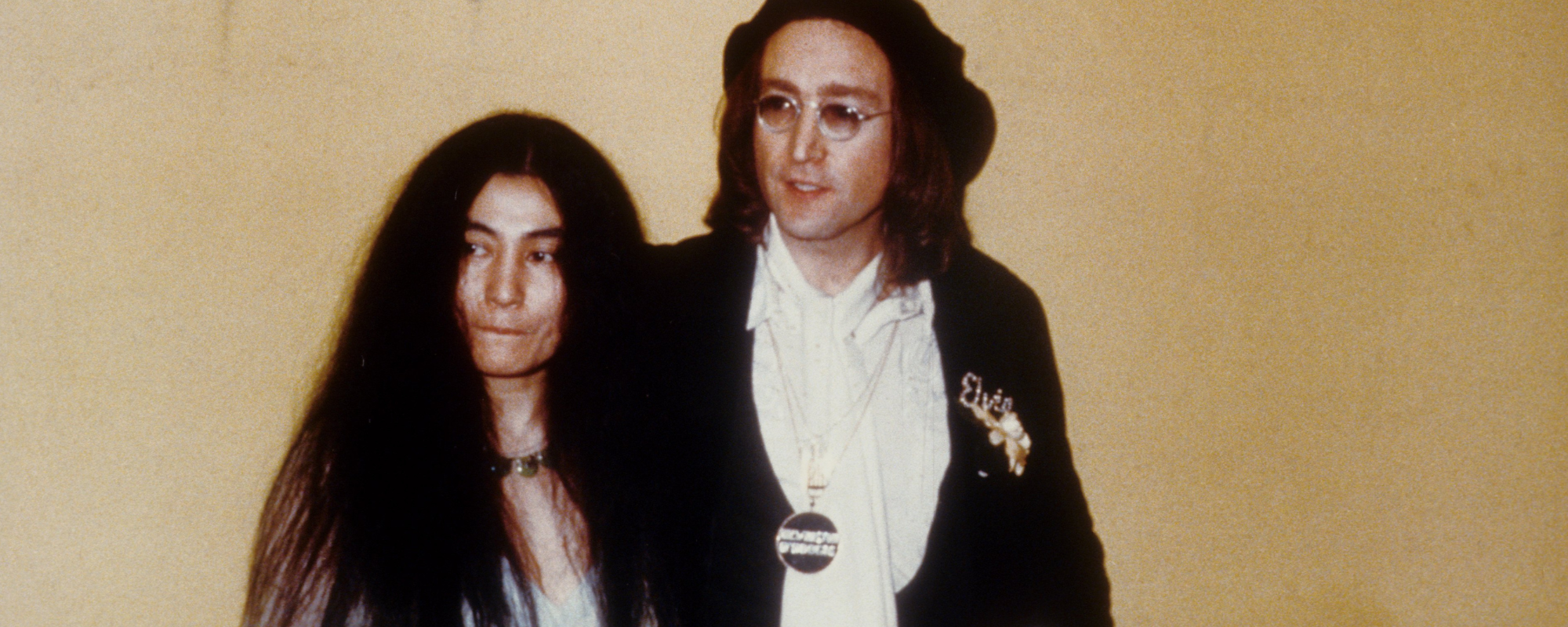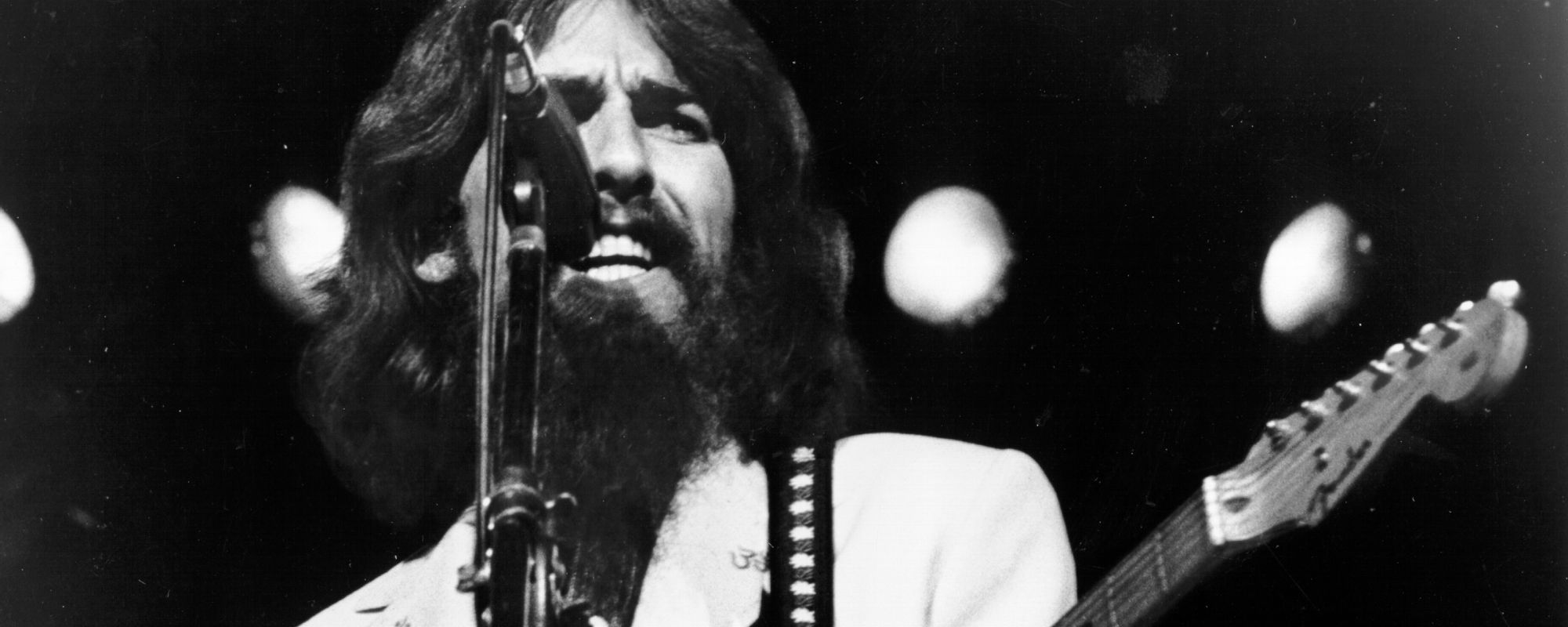Would Wall of Voodoo have ever reached the charts with a hit single if not for its memorable music video? We’ll never know, but their signature song “Mexican Radio”—released in 1982— was just the sort of tune that would have been unlikely to be a hit just a year or two earlier. From Stan Ridgway’s unusual vocal delivery to its unconventional instrumentation to its lyrics about someone who listens to a Spanish-language radio station but doesn’t understand much of what is said, “Mexican Radio” was about as far from being a formula radio hit as was possible.
Videos by American Songwriter
“Mexican Radio” sounded more like a piece from a movie soundtrack than a song on Top-40 radio, and there was a good reason for that. Wall of Voodoo frontman and co-founder Stan Ridgway started out writing music for low-budget film soundtracks. “Mexican Radio” wasn’t written for a movie but rather for Wall of Voodoo’s 1982 album Call of the West. The initial inspiration for the song came from banter on the way to one of the band’s rehearsals. If not for that conversation, there would have been no song, no video, and no memories of Ridgway’s face emerging from a pot of beans.
Commuting with Mariachi Music
According to Ridgway, the refrain for “Mexican Radio” came from a conversation that he and guitarist Marc Moreland would repeatedly have while driving through Los Angeles en route to rehearsals. He and Moreland didn’t like the music that was played on the local radio stations. In a 2005 interview for Mix magazine, Ridgway said, “We were very cynical and we thought it was much better to tune into these Mexican radio stations that would waft in across the border—of course, now the stations are all over Los Angeles. Anyway, when we’d come across one of these stations playing mariachi music, we’d get all excited [and say] ‘Great, man, I’m on a Mexican radio!’”
Eventually, Moreland would record a short demo of a guitar riff he had written with him singing I’m on a Mexican radio over it. Ridgway liked what he heard and wrote some additional lyrics for the tune. The band finished writing the song while they were recording Call of the West at Hit City Studios in Los Angeles. Much of the song’s unique sound comes from the keyboards and rhythm machines being recorded through amplifiers and Ridgway singing some of his vocals through a bullhorn.
An Assist from MTV
A big reason why people still listen to “Mexican Radio” more than 40 years after its release is that its official video received substantial airplay on MTV when it was still a fledgling cable network. The single was released just over a year after MTV’s August 1981 launch, and at that point, a low-budget video still had a shot of getting into rotation. Ridgway told Songfacts Wall of Voodoo’s label, I.R.S. Records, did not want to spend much money on a video for the song, so only $15,000 and one-and-a-half days of shooting went into it.
The video’s interspersing of performance shots, footage from Tijuana (including bullfights), and bizarre images—like an iguana roasting over a barbecue rotisserie spit and Ridgway’s face submerged in beans—made the video one of the most memorable from MTV’s early years. There is little question the frequent play of the video helped “Mexican Radio” to cross over and become a radio hit.
Ridgway Revisits “Mexican Radio (and More)
In the aftermath of the death of Wall of Voodoo drummer Joe Nanini in 2000 and Moreland’s passing in 2002, Ridgway wrote a song about the band’s history called “Talkin’ Wall of Voodoo Blues, Part 1.” The track from his 2004 album Snakebite: Blacktop Ballads & Fugitive Songs recounts his time in Wall of Voodoo, from its 1977 beginnings to his 1983 departure, along with those of Nanini and keyboardist Bill Noland. Ridgway’s recollections of “Mexican Radio” play a key role in the story.
One weekend, Marc’s song fell out
The single they still talk about
We made a video
With Frank Delia behind the lens
Labor Day in Mexico
Lots of beans ‘n drugs ‘n friends
So did Ridgway’s account of how the song’s success contributed to the splintering of the band.
We took off on that tour so long
And played and sang our radio song
Now, it seemed like that old voodoo dog we had
Was payin’ for its fees
We lost control of our own band
To the record company
The Impact of “Mexican Radio”
Though it’s true that we still talk about “Mexican Radio” today, it was not a huge hit in its day. It went to No. 58 on the Billboard Hot 100 and No. 41 on their Mainstream Rock chart. The single helped Call of the West to reach No. 45 on the Billboard 200.
While it’s fair to call Wall of Voodoo a one-hit wonder, they did receive some attention prior to the release of “Mexican Radio.” Their cover of Johnny Cash’s “Ring of Fire” from their self-titled 1980 debut EP received some radio airplay. Wall of Voodoo also charted with another cover. In 1987, their version of The Beach Boys’ “Do It Again” rose to No. 32 on the Dance Club Songs chart, four years after Ridgway left the group.
The most popular cover of “Mexican Radio” was Authority Zero’s 2004 version, which ranks as the ska punk band’s most popular song on Spotify. With more than 12 million streams, it has been nearly as popular on the platform as Wall of Voodoo’s original, which has been played more than 15 million times. The indie rock band Polvo also recorded a version of “Mexican Radio” for the 1992 compilation Tannis Roots Presents: Freedom of Choice—Yesterday’s New Wave Hits as Performed by Today’s Stars.
The meaning of the chatter on Mexican radio stations may have been a riddle to Ridgway and Moreland, but in retrospect, there is nothing confusing about why “Mexican Radio” caught on with so many music fans. Its video still stands as one of the most memorable ever to be aired, but even without the famous clip, the song’s vivid musical and lyrical imagery continues to draw listeners in.
When you purchase through links on our site, we may earn an affiliate commission.
Photo by Suzan Carson/Michael Ochs Archives/Getty Images













Leave a Reply
Only members can comment. Become a member. Already a member? Log in.